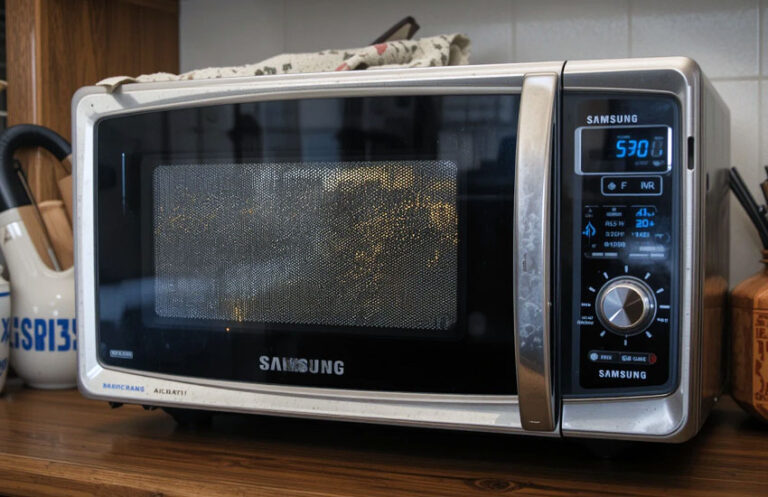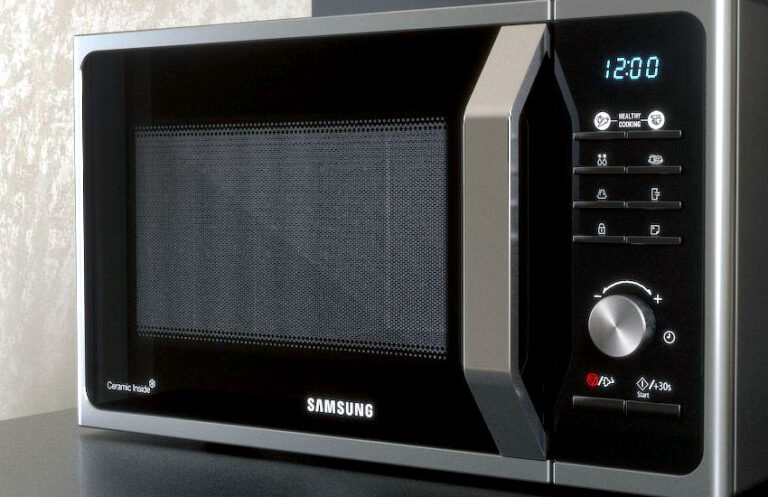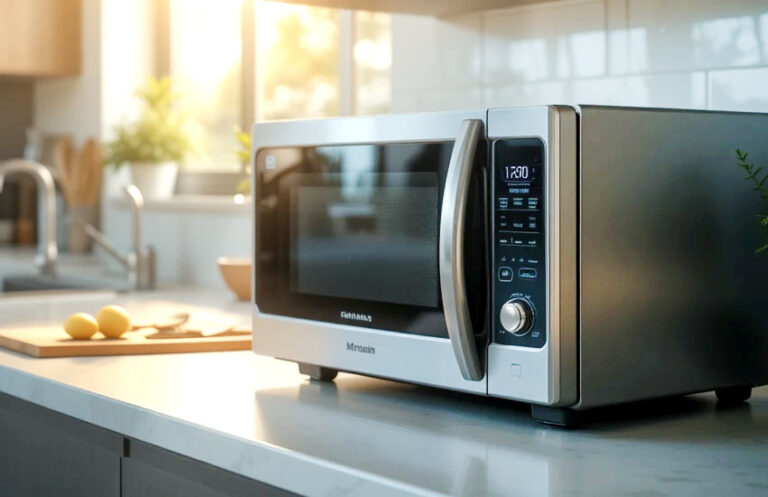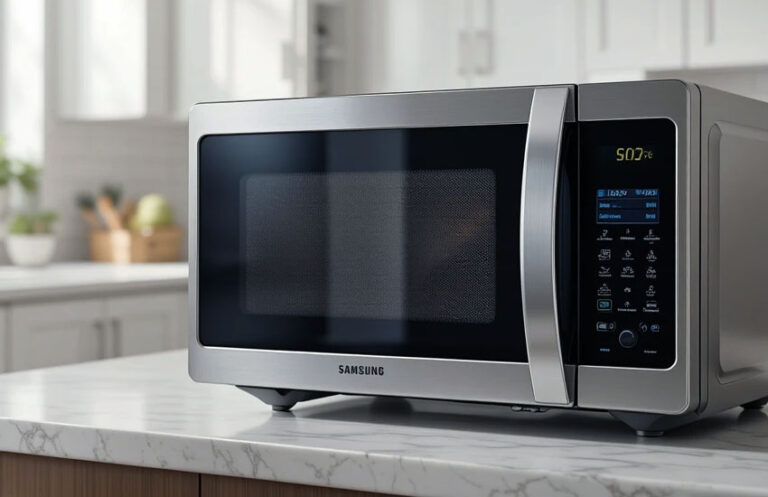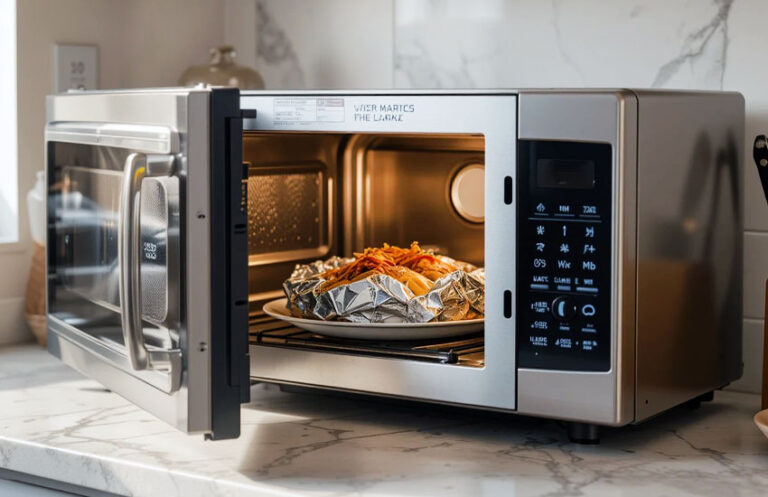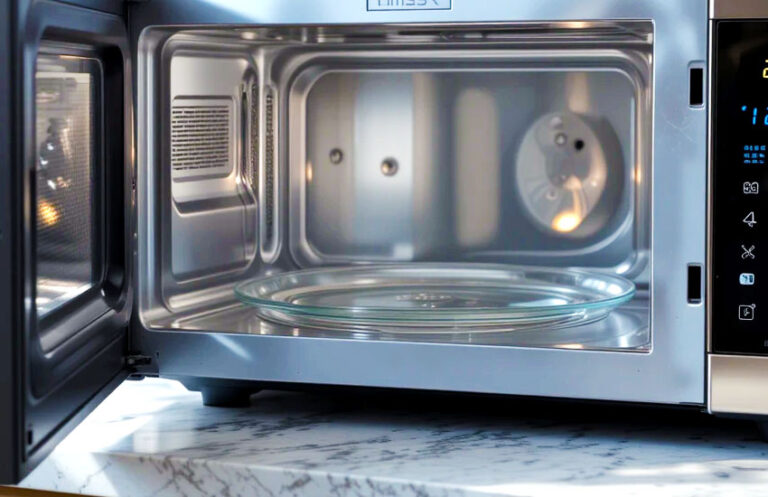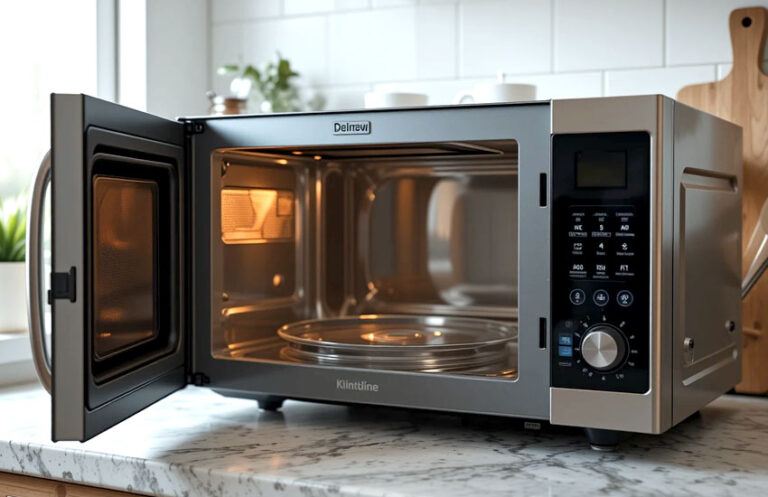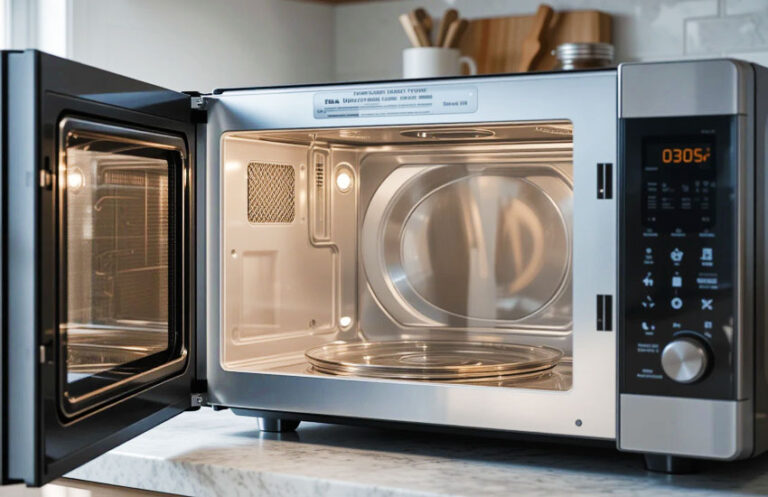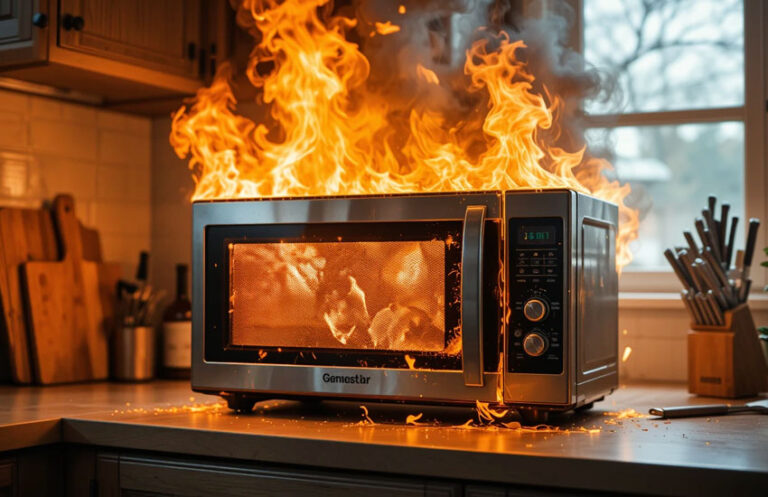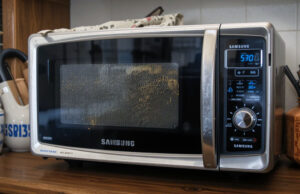If you’ve ever been standing in front of your Samsung microwave, ready to warm up some leftovers, only to see the dreaded “SE” code flashing on the screen, you’re not alone. That “SE” error can be frustrating, especially when you’re craving a warm meal. But don’t worry! In this blog post, we’re going to dive deep into what that “SE” error means, what causes it, and how to fix it. Think of this as your ultimate guide to getting your microwave back in action without needing a tech expert. Let’s break it down step-by-step and make this process as simple as possible.
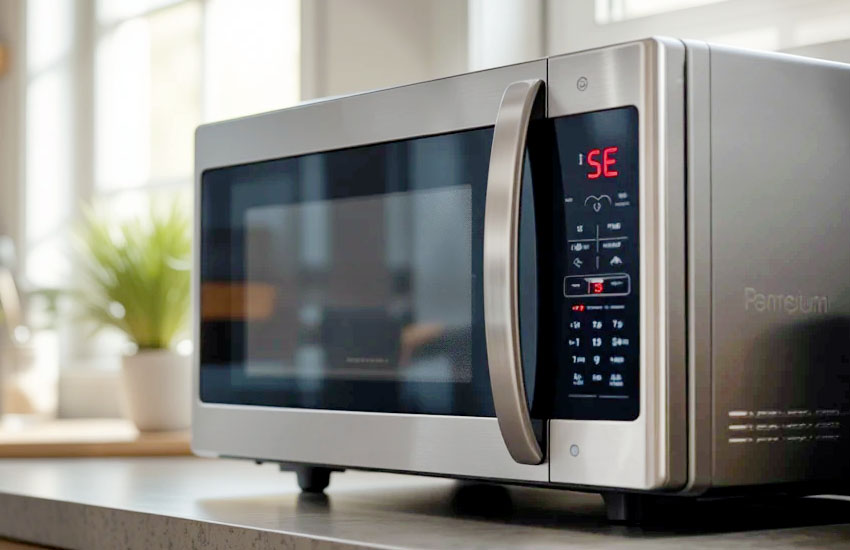
Understanding the Samsung Microwave SE Code: Causes and Fixes
If you’re experiencing the “SE” error on your Samsung microwave, you’re likely wondering what exactly it means and why it’s showing up. Let’s start with the basics. The SE code on a Samsung microwave stands for “Shorted Keypad,” which indicates that the microwave’s control panel isn’t receiving signals properly from its buttons. This can happen for a few different reasons, including a malfunctioning keypad, wiring issues, or even a buildup of dirt or grease that interferes with the buttons.
So, what causes the SE code, and what can you do to fix it? Let’s take a look at some common issues that lead to this error:
1. Faulty Keypad
The most common reason for the SE error is a faulty keypad. Over time, the buttons on your microwave’s control panel can wear out, leading to a short circuit or incorrect signals being sent to the control board. When this happens, your microwave thinks you’re pressing buttons when you’re not, or it might just display the SE error without any input from you.
2. Dirty Keypad
Sometimes the solution is as simple as cleaning the microwave’s control panel. Food crumbs, grease, or dust buildup can cause the buttons to stick or malfunction, leading to the SE code. The moisture or dirt might cause the buttons to send false signals to the microwave’s control system.
3. Loose or Damaged Wiring
If the wiring inside your microwave has become loose or damaged, it could interfere with the proper functioning of the keypad and control board. This might cause the SE code to appear. Wires that are frayed, disconnected, or short-circuiting can prevent your microwave from operating correctly.
4. Malfunctioning Control Board
If none of the above solutions work, the issue might lie with the microwave’s control board itself. This is the part of your microwave that processes all the signals and controls its functions. A malfunctioning control board can lead to all sorts of problems, including the SE error.
So now that we understand some common causes, let’s talk about how to troubleshoot and fix the issue.
Step-by-Step Guide to Resolving the Samsung Microwave SE Code Error
Now that we know the causes, let’s jump into how you can fix this error. Don’t worry, we’re going to walk through everything you need to do step by step. Whether it’s cleaning the keypad or checking the wiring, we’ve got you covered.
1. Unplug the Microwave for a Hard Reset
Before diving into anything too technical, the first thing you should try is a simple reset. Sometimes, a soft reset can solve the issue. To do this, simply unplug your microwave from the power source and leave it unplugged for about 5 minutes. This allows the microwave’s system to reset itself and clear any temporary glitches or errors that might be causing the SE code.
Once the 5 minutes are up, plug the microwave back in, turn it on, and check if the SE error is still there. If it’s gone, great! If not, don’t worry—we’ll continue troubleshooting.
2. Clean the Keypad
If the hard reset didn’t work, it’s time to check the keypad. As we mentioned earlier, dirt, grease, or moisture on the control panel can cause the buttons to malfunction. To clean the keypad, take a damp cloth (but not too wet) and gently wipe down the surface of the control panel. Be careful not to get any water inside the microwave, especially near the buttons.
After cleaning, try pressing the buttons again to see if the error clears up. If the SE code disappears, it was likely just a buildup of dirt or grease causing the issue.
3. Check for Physical Damage to the Keypad
If cleaning didn’t do the trick, there could be a more serious issue with the keypad itself. Check for any visible signs of damage, such as cracks, tears, or areas where the buttons might not be making proper contact. If you find any damage, it may be time to replace the keypad.
Replacing a microwave keypad can be a bit tricky, so it’s worth calling a professional if you’re not comfortable doing it yourself. A technician can inspect the keypad, determine whether it needs replacing, and install a new one if necessary.
4. Inspect the Microwave’s Wiring
If the keypad seems fine, the next step is to check the microwave’s wiring. This involves opening up the microwave’s casing, so if you’re not experienced with electronics, it’s best to call a professional technician. But if you’re comfortable with DIY repairs, here’s what you can do:
- Disconnect the Microwave from Power: Always unplug the microwave before performing any kind of internal inspection or repair.
- Remove the Casing: Carefully remove the screws that hold the microwave’s outer casing in place. Once the casing is removed, you should have access to the internal components.
- Inspect the Wiring: Look for any wires that appear loose, frayed, or disconnected. If you notice any damage, you’ll need to repair or replace the wiring to ensure everything is working properly.
Be cautious when handling the internal components, as microwaves can store high-voltage electricity even when unplugged. If you’re not comfortable performing this repair yourself, it’s always safest to call a professional.
5. Test the Control Board
If all else fails, the issue may be with the control board itself. Testing the control board typically requires a multimeter and knowledge of electronics, so this is another step where a professional technician is recommended. However, if you feel confident, you can check the control board for signs of damage, such as burnt areas, visible corrosion, or loose connections.
If the control board is damaged, it may need to be replaced. You can either purchase a replacement board online or through Samsung’s authorized service centers, or you can have a technician perform the repair for you.
Common Mistakes to Avoid When Dealing with the SE Code
While troubleshooting the SE code error, there are a few common mistakes that people often make. It’s important to avoid these errors to ensure that you don’t make the problem worse or end up with a larger repair bill.
Ignoring Safety Precautions
Whenever you’re working with electronics, safety should always be your top priority. Make sure you unplug the microwave before attempting any repairs, and always take proper precautions when handling potentially dangerous components.
Trying to Force the Buttons
It might be tempting to press the microwave’s buttons repeatedly, hoping that it will fix the issue. However, this could make the problem worse by causing further damage to the control panel or keypad. Instead, try to clean the buttons gently or leave them alone while you troubleshoot other areas.
Checking for Obvious Issues
Sometimes, the solution to the SE error is something simple, like a dirty keypad or a loose wire. Always check for easy-to-fix issues before diving into more complicated troubleshooting steps.
I hope this guide has helped you understand what the SE error means and how to fix it. Whether it’s cleaning your keypad, checking the wiring, or replacing the control board, these steps should get your microwave back in action in no time. Remember, if you’re ever unsure about any of the troubleshooting steps, it’s always best to call a professional. Good luck, and happy microwaving!
Frequently Asked Questions
Is it safe to try fixing the Samsung microwave SE code myself?
It is generally safe to troubleshoot the SE error on your own, but if you’re not experienced with electrical repairs, it’s best to consult a professional. Handling internal components can be dangerous if not done properly.
Can a dirty keypad cause the SE error on my Samsung microwave?
Yes, a dirty keypad can definitely cause the SE error. Food particles, grease, or moisture can interfere with the buttons, leading to malfunctions. Cleaning the keypad might fix the issue.
Do I need to replace the microwave if the SE code persists?
Not necessarily. The SE code is often caused by issues like a dirty keypad or loose wiring. Only replace the microwave if other troubleshooting steps don’t work, and the microwave is no longer functional.
Can a damaged control board cause the SE code error?
Yes, a malfunctioning control board can cause the SE error. If you’ve checked the keypad and wiring, and the issue persists, the control board might need to be replaced.
Is it possible to fix a faulty keypad myself?
Yes, it’s possible to replace a faulty keypad yourself if you’re comfortable with DIY repairs. However, it can be tricky, so if you’re unsure, consider calling a professional technician.
Do I need a special tool to inspect the wiring inside my microwave?
A basic set of screwdrivers should be enough to remove the microwave’s casing, but inspecting the wiring may require a multimeter to check for continuity or shorts. If you’re not familiar with electrical tools, it’s better to leave this task to a professional.
Can a microwave display the SE code without any input from me?
Yes, the SE code can appear without you pressing any buttons. This is usually caused by a faulty keypad or wiring issue that sends false signals to the control board.
Is there a warranty that covers the SE code repair on my microwave?
If your microwave is still under warranty, the SE error may be covered. Check your warranty terms or contact Samsung’s customer service to see if you can get a repair or replacement.

